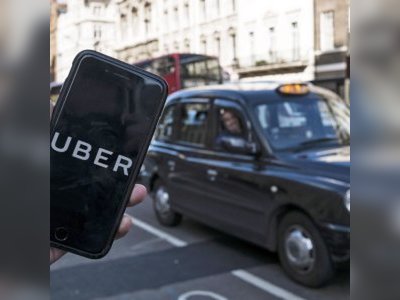The fight to save Penang from proposed mega projects that threaten to erode its heritage
Driving into Penang’s capital, George Town, grey-haired yet youthful driver Danny Khoo pulls over on Gurney Drive, once a seaside promenade and now a lengthy procession of gleaming condominiums. The area beyond this shoulder is fenced off from the beach by a large reclamation project.
“When I was a kid,” says Khoo, getting out of the car and smoothing down his multi-hued shirt, “we would park here and run straight onto the beach for a swim.”
It’s the same story around the island, with sea views blocked off by condos, reclamation works, or both. Like nearby Bangkok, or faraway Vancouver, overzealous property development and investment-not-residence buyers have created significant overstocking, with many flats unoccupied.
Hongkongers, in particular, are drawn to this other formerly British island with its easy-going style, affordability and friendly immigration rules. It is home to a large ethnic Chinese population and is less than four hours’ flight from Chek Lap Kok. As Hong Kong’s unrest has dragged on, the real-estate platform PropertyGuru has seen a 35 per cent increase in web traffic from Hong Kong to its Malaysia portal, much of the interest directed at Penang.
Central George Town’s layout has changed little since colonial days, with European-style buildings clustered around the seafront, and Indian, Malay, Chinese and Eurasian quarters nearby. The preservation of this historical multicultural architecture reinforces the fierce pride Penangites take in their capital, preserved for decades by low rents laid down under British law, which dampened redevelopment. When the controls were lifted, in 2000, a stagnant economy offered further protection against real estate’s rapacious parasitism until George Town was bestowed Unesco World Heritage status, in 2008.
Two kilometres inland from Gurney Drive, in the shadow of Penang Hill, lies Penang Sports Club, a lush 6.5 hectares laid out by the British as a cricket ground in 1947. Over drinks on the veranda, long-time residents discuss development in the form of massive projects backed by the state government. There’s the Penang Transport Master Plan, which includes a six-lane motorway running south to north, the length of the island, and a parallel rail track. There are plans for an undersea tunnel and other new motorways, and to finance it all, a Penang South Reclamation project to create three islands off the south coast that would increase the island’s current population of 700,000 by 60 per cent.
The difference between these initiatives and the previous condo boom is that Penangites are fighting back. The Penang Forum is a coalition of a dozen non-governmental organisations – joined, like Penang itself, across ethnic, social and special interest lines – who have succeeded in delaying the projects since they were announced in 2015.
Often referred to as the “Pearl of the Orient”, Penang “has already lost much of its lustre due to haphazard property development, hill clearings and sea pollution”, says Anil Netto, a 58-year-old Malaysian of Indian descent, who often writes about the environment. He is president of Aliran, an NGO that campaigns for social justice and is part of the Penang Forum. “With the new mega projects, the traffic congestion and emissions will remain unabated, the elevated highways and overhead light rail and the cutting and tunnelling of the hills will be a visual blight, and the land reclamation will erode traditional coastal fisheries and food security.”
Lim Mah Hui, a Malaysian-Chinese retired banker and a leader of the Penang Forum, agrees that “most Penangites feel strongly about protecting and preserving our cultural, historical and environmental heritage”. He says this whole time-sucking, money-burning impasse could have been avoided as far back as January 2013, when Lim was among a dozen professionals who joined the Penang Transport Council, established by the state government to produce a transport master plan. By the end of 2012, British engineering firm Halcrow and two local consultants, after many surveys and consultations among stakeholders, had delivered a 3.2 million ringgit (HK$6 million) transport plan covering the period until 2030.
With the major objective of moving people rather than cars, the Halcrow plan included new motorways but also raised the share of public transport from 5 per cent to 40 per cent, and included policies to curb growth in private vehicle usage. In March 2013, the Penang state government adopted the Halcrow scheme as the blueprint for implementation at an estimated cost of 27 billion ringgit.
Then, in 2015, says Lim, “Things went terribly wrong.”
Penang may be only a third the size of Singapore, and tucked away at the top of the Malacca Strait, but like Hong Kong it became one of Asia’s great melting pots. It is best understood from the funicular railway up 833-metre Penang Hill: to the east, a panoramic view of northwest Malaysia; to the west, Sumatra, Indonesia; and stretching away to the north, Thailand, Myanmar and the vast Indian subcontinent.
The Malacca Strait was infested by pirates for centuries before English sea captain Francis Light laid claim to Penang, in 1786, on behalf of the East India Company, which had identified the island as a strategic trading post for Britain’s burgeoning commerce with China. From nearby Kedah state, on mainland Malaysia, he brought a Catholic Eurasian community vulnerable to religious persecution by the Burmese in Siam, including his part-Portuguese wife, Martina Rozells, two of their children and two French Catholic priests.
Once law and order were established, and people of all faiths found acceptance, the populace quickly expanded to 10,000, leading a lieutenant governor to observe, “There is not, probably, any part of the world where, in so small a space, so many different people are assembled together or so great a variety of languages spoken.”
Penang was ruled by the East India Company from the subcontinent. It shipped out sepoys to defend Fort Cornwallis – which, though its rusty cannons are still present, was only ever used for administrative purposes – as well as convicts to build the infrastructure and indentured labourers to cultivate sugar cane. Indian Muslim merchants, trading in pepper and pelicat cloth, made up the settlement’s first elite business community. Tamils were soon joined by Gujaratis, Punjabis, Malayalis, Telugus and Bengalis. The early Anglo-Indian influence is evident from the evolution of the bungalow (derived from the Hindi bangla to describe a cottage for European settlers in Bengal) to the domes atop the Georgian law courts.
The Chinese, mainly Hokkien, Cantonese and Hakka, arrived in large numbers in the 19th century, dominating trade, shipping, tin mining and opium and becoming the largest ethnic group. The Clan Jetties, wooden piers with stilted homes, were built more than a century ago by Chinese labourers servicing the port and are still home to their descendants, who run tourist shops. As the Chinese grew rich, they sent their children to British boarding schools and began to add British architectural features, such as columns and cornices, to their grand homes.
From the outset, Light deliberately opened the colony to people of all creeds and Penang’s religious tolerance is another important reflection of this multicultural society. It is manifested in a long thoroughfare, dubbed Street of Harmony, which includes an Anglican church (the oldest in Southeast Asia), a Taoist temple, a mosque and a Hindu temple.
Each group celebrates its faith with its own colourful festivals. But it was another quality that caught the attention of a senior Unesco official, Dr Richard Engelhardt, during a visit to Penang in 1998. After observing celebrations for Lunar New Year and Thaipusam, Engelhardt noted, “You don’t just have cultural encounters but also cultural fusion.” Unesco encouraged local officials to apply for heritage listing, which was awarded in 2008.
“When one religious group celebrates, it’s a community event,” says Clement Liang, a Penang Heritage Trust councillor. “Christmas, Aidilfitri, Diwali and Chinese New Year are jointly celebrated by many, regardless of ethnic background, for fun and friendship. Many non-Christian Chinese and Indians also participate in Catholic festivals like the St Anne’s Day procession. The Japanese Bon Odori, German Oktoberfest and Irish St Patrick’s Day have also become localised, equally cherished by various communities. For two centuries, the cosmopolitan nature of Penang remains unchanged.”
This cross-cultural participation is supported by George Town World Heritage Incorporated (GTWHI), which is tasked with sustaining the city’s cultural legacy.
“We have many community-based programmes,” says general manager Ang Ming Chee. “We in George Town are diverse in race, religion, ethnicity, education and life experience but, most importantly, we understand these differences and compromise the gaps, and celebrate our peaceful coexistence in our unique ways.”
Integration can also go beyond the surface. “I see Chinese lion dances performed at Malay weddings and outside Indian temples,” says veteran heritage guide Cumalle Khuan, daughter of a Chinese father from Xiamen and a Thai-Chinese mother. “I have a Chinese friend whose mother was seriously ill, and he prayed to the Indian god Murugan. When she recovered, he took part in kavadi , a ritual that involves piercing the body with knives and hooks.”
Although traditional crafts such as charcoal making, rattan weaving and wood carving have all but disappeared, some still maintain Penang’s “living heritage”. Lee Beng Chuan is in his 90s and still makes joss sticks by hand, although these days he is helped considerably by his son. He says he is the last of his kind as most of the fragrant sticks are now produced in factories.
In Little India, songkok maker Haja Mohideen Mohammed Shariff, in his 70s, says Ramadan keeps him busy, but his business, too, is being eroded by others manufacturing the Muslim hats by machine.
Also vanishing from George Town are the kopitiam (coffee shops), where locals gather to gossip. In their stead are trendy boutiques, bars and restaurants. Chulia Street is typical: once home to Indian Muslim merchants (chulia), then mistresses of affluent Chinese, today it offers a lively night scene for young people and backpackers.
Preserving George Town’s architectural integrity is not easy. While condos crowd the beaches, foreign businesses are buying up terracotta-roofed shophouses and converting them for commercial purposes, without following strict guidelines on traditional style and materials.
Teresa Capol moved to Penang from Kuala Lumpur in 1979 and, with her Swiss husband, Urs, bought a shophouse in 2000 and turned it into a restaurant while observing renovation guidelines. But she notes that, in a nearby building, “they have broken down walls, put in windows and painted the outside purple. It’s against the rules, but there is little enforcement.”
Salma Khoo, custodian of the Sun Yat-sen home-turned-museum, runs a bookstore in a converted shophouse with her Indonesian husband. “Renovation abuse is widespread,” she says, noting unclear regulations, red tape and a lack of heritage specialists make conformity complicated. GTWHI has 30 staff tasked with sustaining the city’s cultural legacy and Ang invites anyone with a query or complaint relating to renovation to contact her office, though she adds that enforcement lies with the city council.
The struggle to preserve George Town’s historical authenticity is overshadowed only by the battle for Penang’s hills and seascape. To explain, Danny Khoo drives us past durian forests and what he says are the island’s last remaining paddy fields to Pulau Betong, a fishing village in the island’s southwest corner. A few customers amble around the small fish market. A dog yawns beside a Chinese stone shrine. It is just after 11am and most fishermen are out on the water, but on a wooden pier by a slow-moving brown river, between banks of trees and mangroves, fisherman Zolkifli bin Mohamed takes a break beside a blue-painted boat.
“We are not happy with the reclamation,” says Zolkifli, who has fished these waters all his life, like his father and grandfather. “Our boats are small and so we fish in the shallow waters rather than the deep sea. The reclamation will drive the fish away from our fishing grounds.”
By the river sits a basic Hakka eatery, a tin roof with no walls, food served on plastic plates. There is none of the colonial ambience of Penang’s oldest hostelry, the Eastern & Oriental Hotel, or the variety of the food court opposite Clan Quay, but its pomfret and shrimp, stir-fried in brown sauce, is sublime. Next door is a similar restaurant, equally unpretentious, which featured in an episode of the late Anthony Bourdain’s No Reservations television series.
As with any “development” story, Khoo’s rhetorical question is foreboding: “But how long will they keep coming if we lose our fresh seafood supply?”
Then he says a Bourdain-fan tourist group from Singapore has already booked him to take them here later this year.
What went so “terribly wrong” in 2015 was that the state government suddenly revised the environmentally sensitive and local-friendly Penang Transport Master Plan, which became known as the SRS PTMP under a new entity, SRS Consortium, a joint-venture between Malaysian engineering company Gamuda (60 per cent) and local real estate development firms Loh Phoy Yen Holdings (20 per cent) and Ideal Property Development (20 per cent).
The new SRS plan shelved many Halcrow recommendations to improve public services, such as buses and ferries, and instead proposed projects that encouraged more cars. The budget for the SRS transport plan ballooned to 46 billion ringgit, 60 per cent more than the Halcrow plan.
In April last year, Penang’s chief minister, Chow Kon Yeow, told a press conference the reclamation plan was needed “not only to finance the Penang Transport Master Plan, but to drive the state’s economic development in the future. The reclamation of the three islands will be the engine of growth for the future […] If we are to give in to the comments of certain groups to not build the highway, can you imagine the terrible traffic conditions of Penang in 2025, 2030 and 2035? Without this project, it will lead to economic losses as the worsening traffic congestion will lead to lower productivity. With traffic jams, tourists and investors will not come.”
NGOs counter that the scale of the government projects is unnecessary and that the three-islands project “will have a higher population density than Hong Kong, and one wonders where the planned 460,000 new residents will come from”, says Lim. “The reclamation will destroy fertile seabeds for fisheries, affect the livelihoods of thousands of fishermen and reduce our supply of fresh seafood.”
The Penang Forum also notes that the state allocation of 305 million ringgit for feasibility and detailed design studies for the undersea tunnel and three motorways is under investigation by the Malaysian Anti-Corruption Commission. In recent months, there have been signs the government could be prepared to compromise. In an interview with the New Straits Times, Chow said the mega projects “might be modified, scaled down or even reviewed depending on circumstances”.
Meanwhile, the NGOs fight on. “The projects were supposed to have taken off around 2017 but now it might be 2020,” says Lim, who has written a book on the protracted struggle. “The state government has received most of the approvals for the reclamation project and the PTMP projects,” he says. “For now, we are hoping the reclamation will not go through and we are also against the Pan Island Link highway and would like the government to propose a trackless tram or bus rapid system in lieu of the Light Rail Transit system. I don’t want to give up hope and we are continuing with our objections and protests until the fat lady sings.”

















